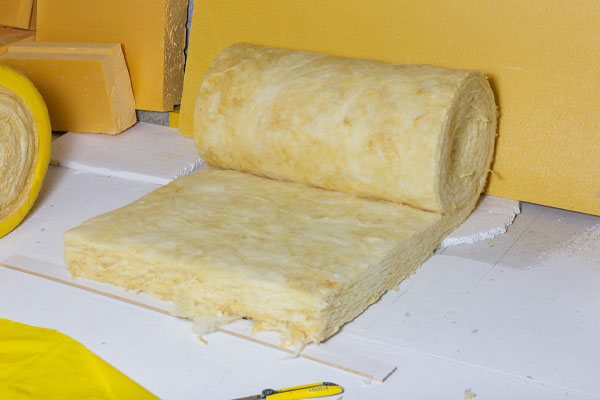Why Does Furnace Sizing Matter?

Large furnaces can certainly catch the eye, but they aren’t necessarily ideal for every home. Choosing the most powerful system can lead to less than satisfactory performance when it’s not a fit for your space’s specific requirements. Concentrate on selecting a furnace that aligns with your home’s unique heating needs rather than opting for the biggest model on the market. Finding the right furnace involves various factors to consider. Enlist the expertise of a skilled HVAC contractor, like Hart Home Comfort, who can offer scientific analysis and ensure a perfectly suited furnace for your home. This article will delve into the importance of proper furnace sizing.
Significance of Furnace Sizing
Table of Contents
Many homeowners often misunderstand furnace sizing. Selecting a furnace is frequently done based on unreliable criteria, leading to either excessively large or inadequate units for their homes. This misstep, typically due to a lack of expert guidance, can have significant negative impacts. The greater the disparity between the actual and the ideal furnace size, the more severe the consequences can be.
An improperly sized furnace can lead to physical discomfort and financial burdens. Even minor mismatches in sizing can be a source of constant annoyance. Securing the correct furnace size from the beginning is vital to enjoying many years of trouble-free use. Keep reading to learn about the disadvantages of incorrect furnace sizing and to gain useful advice on selecting the furnace that fits your home perfectly.
What’s Wrong with Oversized or Undersized Furnaces?
1. Comfort

An undersized furnace has insufficient power to keep your home warm, which is especially noticeable during the chilliest days of the year. Despite having the heating system operating at full capacity, you might still find yourself bundling up in extra layers and blankets to stay warm. The furnace may operate continuously throughout the day yet fail to reach your desired temperature.
Conversely, an oversized furnace can lead to its own set of issues. It tends to heat certain areas of the house too quickly, misleading the thermostat into believing the entire home has reached the desired temperature. Consequently, the furnace shuts off prematurely, leaving some rooms still cold. This can be a source of discomfort and complaints from family members experiencing uneven temperatures.
2. Energy Costs
Energy costs are an inevitable part of running a furnace. Higher energy consumption directly translates to higher monthly bills, regardless of whether your furnace uses natural gas, propane, or heating oil.
A furnace that is either too big or too small will lead to excessive fuel costs, potentially amounting to thousands of dollars annually. This extra expense does not equate to increased comfort; instead, it often results in uneven heating throughout your home.
To prevent this wasteful expenditure, ensure accurate furnace sizing. Consult an expert to determine the correct size for your furnace.
3. Furnace Efficiency

Furnace efficiency varies with its operational stages. The energy usage is higher during start-up and shut-down phases, making it beneficial to limit these periods. The furnace attains maximum efficiency during the middle part of its cycle when it operates in a steady state.
Excessively large furnaces often fall into a pattern known as “short cycling,” where they frequently turn on and off, resulting in higher energy consumption than a well-sized furnace. This prevents them from reaching a steady operational rhythm. In contrast, smaller units may overwork to heat a space, accelerating wear and tear. Since heating systems are a primary energy consumer in U.S. homes, incorrect furnace sizing exacerbates household costs and environmental impact.
4. HVAC Lifespan
Short cycling doesn’t just compromise comfort and efficiency; it also shortens the lifespan of your furnace. The frequent turning on and off of a furnace accelerates the wear and tear of its components, diminishing its expected service life. Instead of benefiting from a furnace that could last 20 years or more, you might find yourself facing replacements in just a decade or less. This issue of reduced lifespan also applies to undersized furnaces.
Consequently, you’ll likely need to replace your furnace earlier than anticipated, which involves spending thousands on a new installation. This is not a minor investment. To ensure your money is well-spent, it’s crucial to invest in an accurate professional assessment for a smart furnace selection. Skilled HVAC technicians can guide you in finding a furnace that is an ideal match for your home.
How Proper Furnace Size Is Calculated
1. Load Calculation
Each house has unique heating requirements, influenced by various factors such as floor area, layout, siding material, window types, insulation quality, and orientation. Due to the complexity and time-consuming nature of manual calculations, experts typically employ advanced software to input these variables and quickly generate precise results.
Some old-fashioned contractors may rely on traditional methods and simple rules for load calculations, which can result in inaccurate assessments. To ensure precise and trustworthy results, engage HVAC professionals who employ modern techniques for their calculations. Do this approach when you’re replacing your heating system with a new furnace.
2. BTUs
If you’re deliberating furnace replacement and wish to explore your options independently, a quick estimate can be calculated using your home’s square footage and the local heating factor. Multiply these two to get a basic idea of the required furnace capacity.
Indoor heating requirements adapt to external temperatures. The heating demand is naturally lower in regions near the equator, where temperatures are consistently high. Conversely, the heating load increases as you move to higher latitudes with colder climates. For example, California’s heating factor is around 30 to 35 BTUs, whereas Minnesota, being colder, requires between 50 to 60 BTUs.
3. Insulation

While you can’t change your region’s climate, you have control over your home’s insulation, which is crucial in mitigating the impact of external temperatures on your indoor environment. Effective insulation can be implemented in areas like the attic, ceilings, floors, and exterior walls. Insulate your basement or crawl spaces, and seal gaps around doors and windows.
Proper insulation allows you to opt for a furnace with a lower BTU rating than what might typically be expected for your area. For instance, a 1,000-square-foot home in Minnesota generally requires a 60,000-BTU furnace. However, the load can be significantly reduced with thorough insulation.
Conclusion
The key to optimal furnace selection is compatibility. Rather than seeking the largest unit available, focus on finding a size perfectly suited to your home. Enlist the expertise of a professional HVAC contractor to conduct advanced load calculations, ensuring accurate sizing. Your diligence will be rewarded with a comfortable home, efficient energy use, substantial savings on energy costs, and an extended lifespan for your heating equipment.
Contact Hart Home Comfort for Your HVAC Needs
Hart Home Comfort offers exceptional heating and cooling services in Nassau County, Suffolk County, and Queens, New York. Our professionally certified and highly skilled technicians are experts in HVAC maintenance, repairs, installations, and replacements, ensuring top-notch service for your system.
We provide competitively priced heating and cooling solutions to improve comfort, increase energy efficiency, and reduce costs. Whether you need repair or a new HVAC system, we’ll recommend the best options within your budget. Our work comes with a satisfaction guarantee. For a service appointment or a free in-home estimate, call Hart Home Comfort today.
For any questions about what Hart Home Comfort can do for you, give us a call today. Click here to contact us now or call us at (631) 667-3200 to find out more! Click the link to view our service area.

Related Articles:
